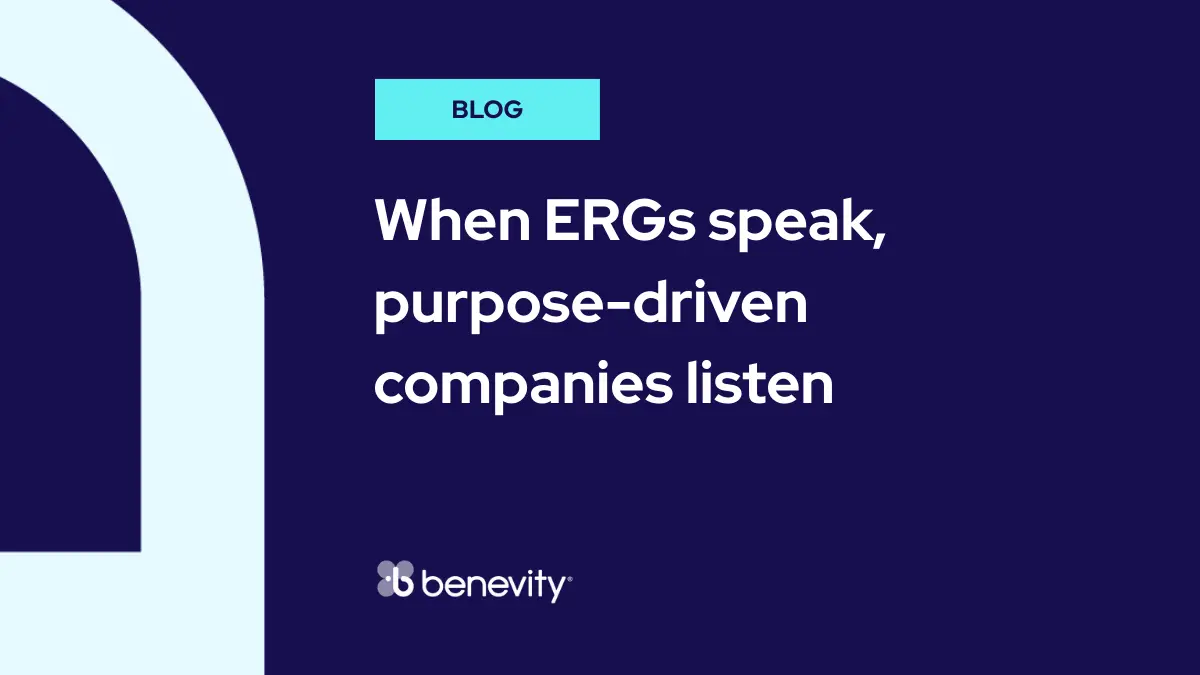Companies grounded in purpose don’t just weather change — they lead through it. More than a department or a line in a report, social responsibility is a commitment to people, to progress and to making business a force for good. In today’s shifting landscape, where the fabric of workplace culture is being tested, Employee Resource Groups (ERGs) have emerged as critical vehicles for inclusion, innovation and impact.
But much like the people who participate in them, ERGs can’t thrive in isolation. They need to be supported, seen and strategically integrated into the broader CSR and employee engagement framework. Now more than ever, companies must listen, evolve and act.
Why ERGs matter more than ever
ERGs are more than communities — they’re catalysts for culture. In fact, McKinsey found that employees in effective ERGs report higher belonging than their peers. This is critical during times of social uncertainty and polarization — times when trust is most needed. The latest State of Corporate Purpose Report from Benevity Impact Labs shows that 87% percent of impact leaders say that ERGs are a trusted source of information.
These employee-led groups provide safe spaces to connect, advocate and grow. And the impact is tangible: a report by BetterUP showed that workplace belonging leads to a 56% increase in job performance, a 50% reduction in turnover risk and a 75% decrease in employee sick days. There’s no doubting their value. The 2025 State of Corporate Purpose Report also found that 82% of business leaders confirm that ERGs are now embedded into their organizational infrastructure.
“Today's changing regulatory landscape is forcing companies to re-evaluate their employee community strategies, including their Employee Resource Groups. Even so, the vast majority of companies are continuing to invest in their ERGs within the legal parameters because they are proven drivers of inclusion and innovation.”
Sona Khosla, Chief Impact Officer at Benevity.
But for ERGs to meet the moment, they must evolve — and so must the way companies invest in them.
The challenges ERGs face
Navigating complexity and controversy
As cultural and political tensions rise, ERGs are navigating sensitive terrain. While their advocacy is essential, it can also invite internal tension if not handled thoughtfully. Without clear boundaries and alignment, companies risk alienating employees or eroding trust.
Risk of burnout
ERG leaders are often volunteers, balancing their leadership roles alongside their core responsibilities. Without recognition, resources or relief, burnout can take root, weakening the impact of the ERG and the engagement of its leaders.
Not a substitute for strategy
It’s critical to remember that ERGs are not a replacement for DEI infrastructure. They must complement — not replace — inclusive policies, executive accountability and data-informed action.
How to evolve and empower ERGs for the future
1. Bridge ERGs and business strategy
ERGs shouldn’t exist in a silo. Aligning them with business goals can help put a sharper focus on community and inclusion, but it is also worth considering how ERGs might serve as business resource groups (BRGs) or strategic sounding boards. Nearly 40% of companies are restructuring ERGs to align with the business, according to the Benevity 2025 State of Corporate Purpose Report. Pushing that definition a bit, some companies have embedded ERGs within BRGs as incubators for new ideas across a wider operational spectrum, including:
- Piloting more accessible product design features
- Enhancing employee experience programs
- Informing supplier diversity and ethical sourcing
2. Deepen executive sponsorship
Leadership matters. When executives champion ERGs, it signals that inclusion is business-critical. Empowered ERGs with senior sponsorship tend to more effectively and authentically support corporate culture strategies. This means:
- Helping navigate internal structures / removing barriers
- Identifying and lending skills and support to ERG initiatives
- Allocating budget
- Championing the group vocally / internally and externally showing up as allies
3. Support ERG leaders
Include ERG members and leaders in leadership track opportunities. When organizations treat ERG leadership as a pipeline for talent growth — and support it accordingly — the impact multiplies. “ERGs can serve as a simple way to identify and develop future leaders within the organization,” says Khosla. “They can be talent incubators, creating environments for informal mentorship, leadership training, business knowledge and cross-functional growth opportunities.” Support your ERG leaders with:
- Access to coaching and professional development
- Administrative and logistical support
- Inclusion in corporate communications and events
- Dedicated time and recognition
4. Tailor global ERG strategies
One-size-fits-all doesn’t work globally. ERGs must be culturally and legally adapted across regions. For example, what’s possible in Canada may reflect differently in other parts of the world. Successful global CSR and DEI leaders are always mindful to:
- Invest in regional ERG governance structures
- Co-create strategies with local employees
- Prioritize safety, compliance and relevance
6. Listen, learn and lead with empathy
ERGs can be a powerful listening tool — a direct line to employee sentiment. Benevity data shows that 66% of large enterprises are regularly consulting with ERGs on decisions that affect the communities they represent. Especially during moments of change, how you engage ERGs can shape trust for years to come. Plan for opportunities to tap into dialogue and feedback through:
- Listening sessions
- Cross-functional steering committees
- Transparent, proactive communications
When U.S.-based cloud computing company PagerDuty wanted to create a more inclusive and impactful Giving Season campaign for their employees, they looked to ERGs and impact champions to populate their Giving Guide with organizations that were relevant to the various causes important to PagerDuty employees. Here, ERGs served as a helpful resource and prompted an opportunity to collaborate across the business. The result was over $58,000 USD donated to more than 600 unique nonprofits in just two weeks.
A future built on purpose and people
Business and purpose are not opposing forces — they’re two sides of the same coin. And as companies recommit to values that matter, ERGs have become not just a nice-to-have but a non-negotiable.
This is not the time to pull back. It’s the time to double down — on people, on community and on the programs that make belonging real.
Because when ERGs speak, the most resilient organizations don’t just listen — they lead.









